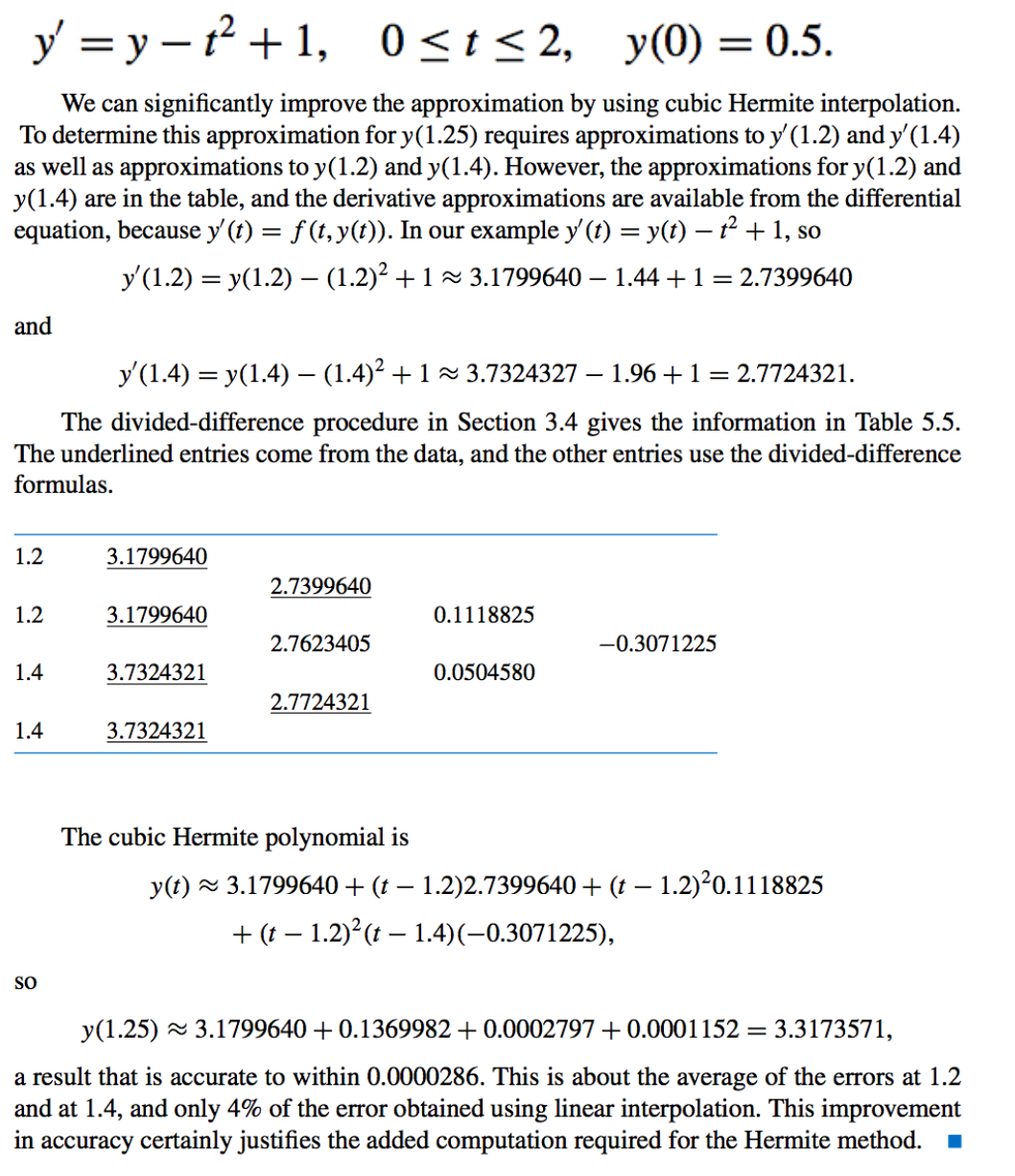Local Truncation Error
-
- What?
- The local truncation error at a specified step measures the amount by which the exact solution to the differential equation fails to satisfy the difference equation being used for the approximation at that step.
- Why?
We need a means for comparing the efficiency of various approximation methods.
The local truncation will serve quite well to determine not only the local error of a method but the actual approximation error.
-
Definition:

- Why local?
This error is a local error because it measures the accuracy of the method at a specific step, assuming that the method was exact at the previous step.
- What does it depend on?
As such, it depends on the differential equation, the step size, and the particular step in the approximation.
-
Euler Method Truncation Error:



- How to select difference equations methods?
One way to select difference-equation methods for solving ordinary differential equations is in such a manner that their local truncation errors are O(hp) for as large a value of p as possible, while keeping the number and complexity of calculations of the methods within a reasonable bound.
Talors Method
-
Taylors Method of order n:


-
Approximation Theorem:


-
Using Hermite Polynomials to evaluate a differential equations at a midpoint:
